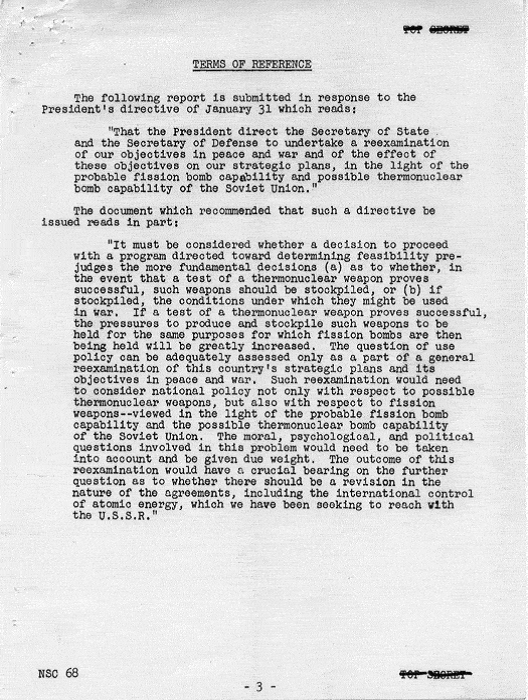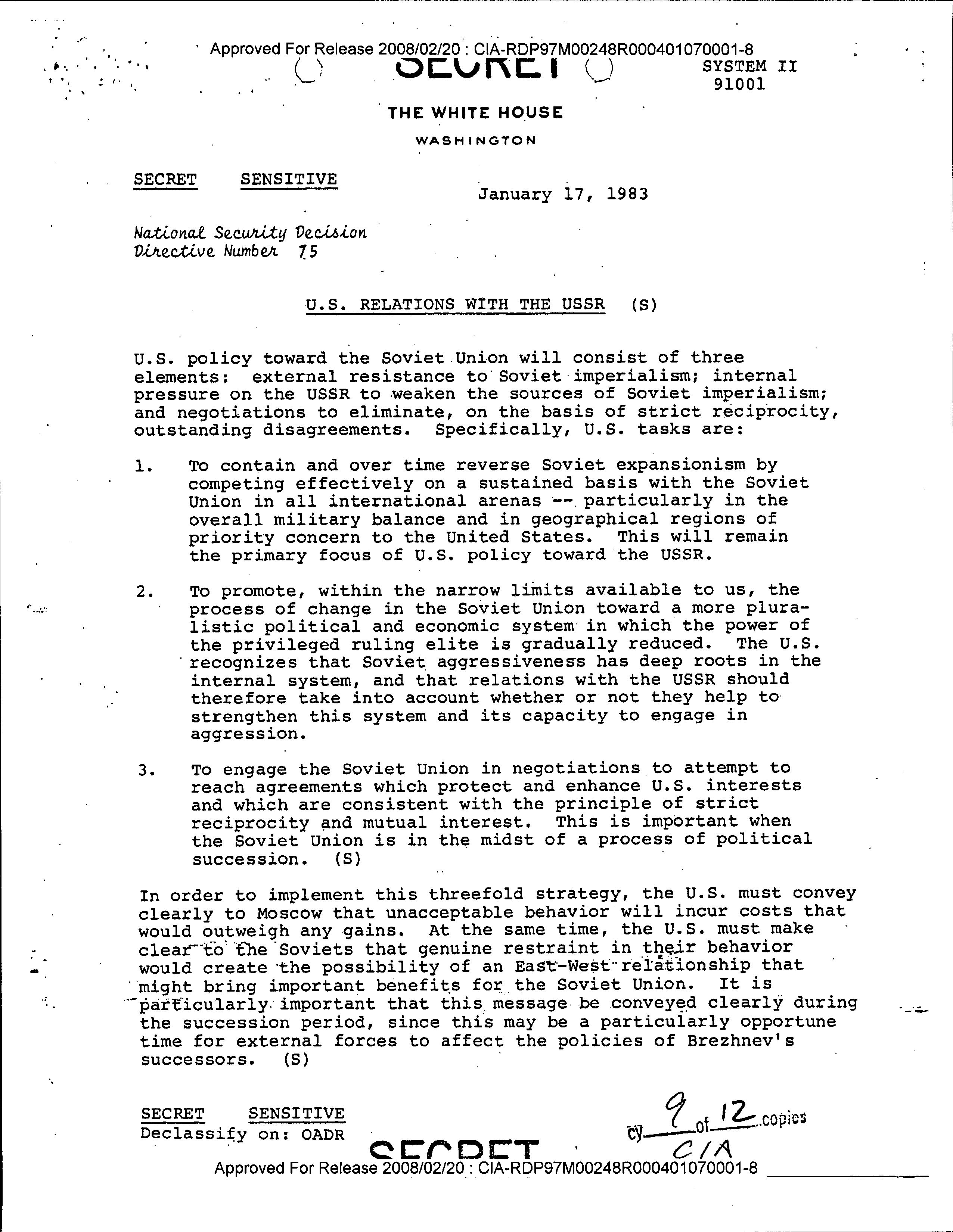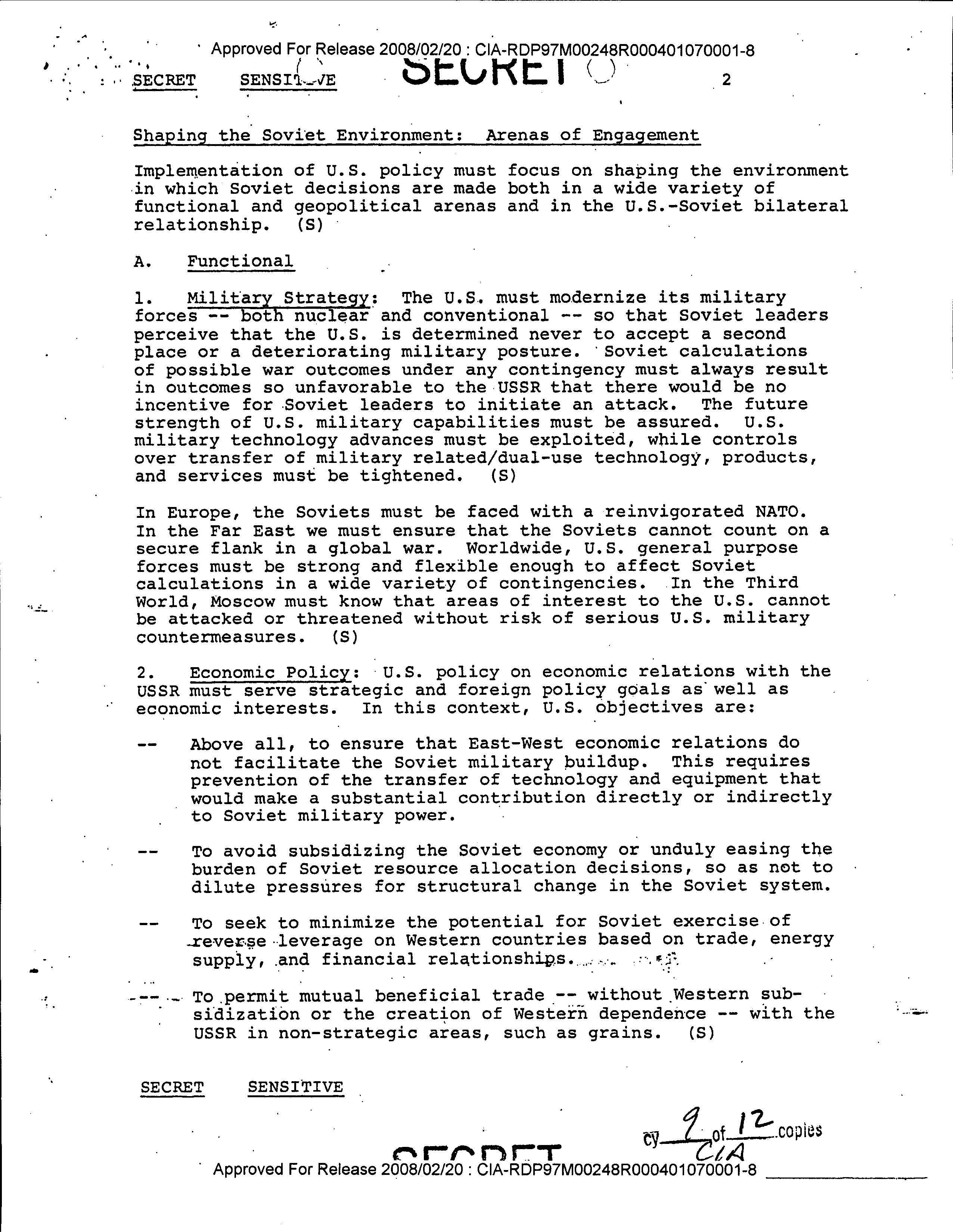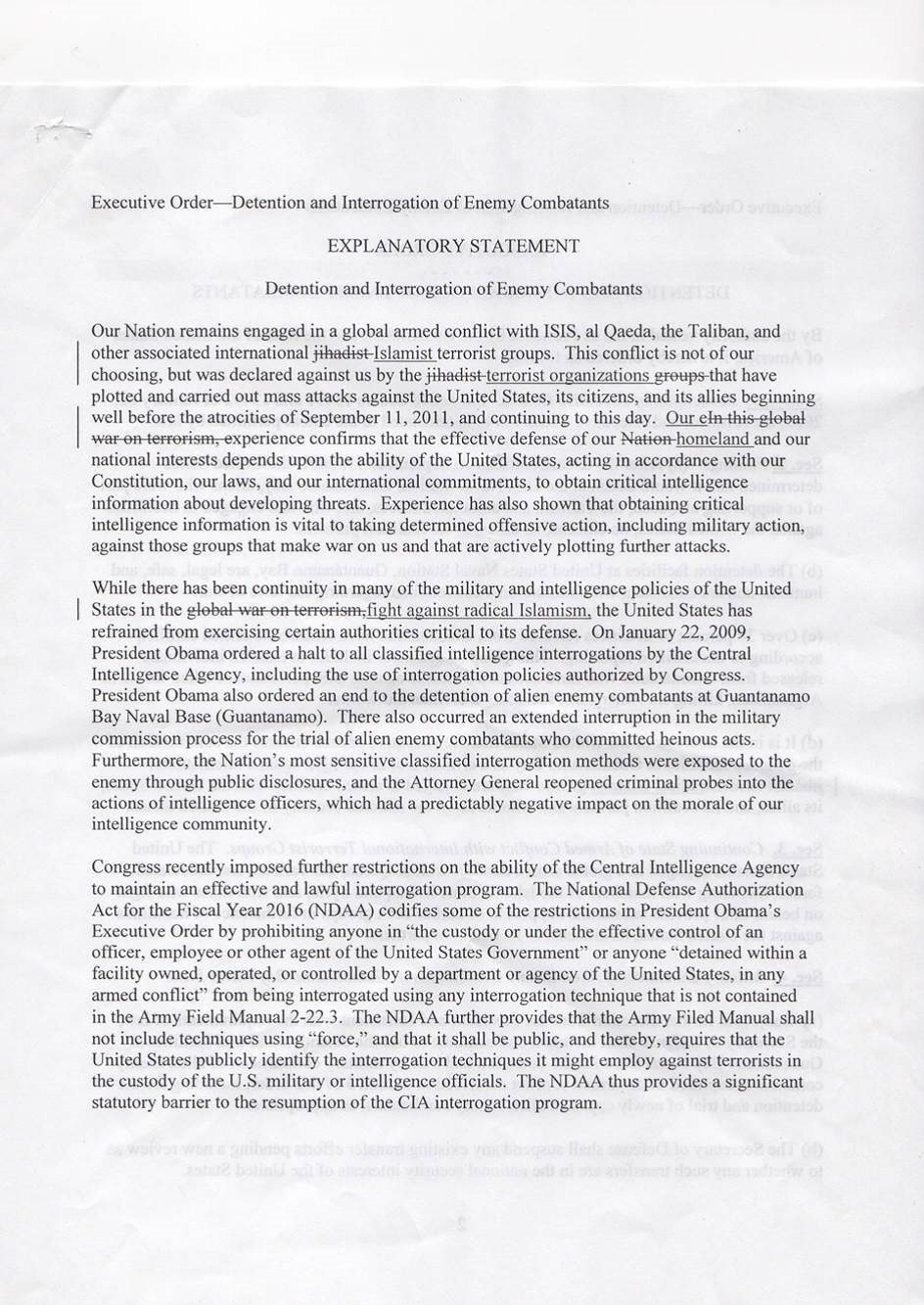Translation: For among times of arms, the laws fall mute. But is this true?
Much opposition was forced on President GW Bush for his actions by executive order and presidential findings directly after the 9/11 attack. Bush ordered countless legal authorities inside and outside government for legal decisions on every step he took including that of ‘enhanced interrogation techniques’.
We have a major debate that will not be solved any time soon on the legality of the President Trump executive order on the refugee question which has caused major protests and legal action already as we see detentions of foreign nationals at airports. All executive orders are subject to judicial review. Presidents have been given the option of using extraordinary power and in many cases that is a good condition, yet in the matter of law, there have been without question many abuses.
This post is not meant to form any conclusion on the legal veracity of this executive order, rather it is designed to add it more facts and additional questions moving forward. President Trump has a mess to clean up left by Barack Obama, of this, there is no dispute. The White House did take action at the stroke of the pen to begin to make America safer, however was this action taken too soon and without legal opinions including that of the Office of Legal Council? That has not been answered.
So, here are some items that must be included in this debate that extends the whole view and argument.
These are not in any specific order so the reader can individually prioritize.
- Should President Trump have set an effective date of this Executive Order?
- How was TSA, DHS and all other associated agencies briefed on those already in transit and with validated travel documents in hand?
- Did the White House consider exemptions or waivers for those that have been vetted previously that worked or work for the USG in some capacity?
- Why were some countries on this list while others were not? The San Bernardino shooters were from Pakistan, but do we need Pakistan for the war in Afghanistan?
- The majority of the terrorists on 9/11 were from Saudi Arabia and yet Saudi was omitted from the list, why? Could it be that Trump had/has business interests there or because some that were formally in the Kingdom did aide often the United States when it came to terror like in the case of kidnapped CIA operative William Buckley in Beirut of which the Saudis helped finance his recovery? It is without question the Saudis dislike Iran as much as the United States.
- We have seen millions of refugees enter all parts of Europe in recent years and yet they can enter the United States under the ‘visa waiver’ program. Did the Trump White House take this under full consideration? The answer is a ‘kinda, yes’ they did but that review has been ordered and not yet deployed.
- We have countless refugees and asylees entering the United States from our southern border, but was Mexico on the list? No, yet we don’t know either if the phone discussion President Trump had with President Nieto, this topic was addressed.
- There are in fact limitations to who can be accepted into the United States under 8 U.S. Code S 1182 and applying those restrictions remain in the authority of the President while waivers can be issued and it is germane to ask if this law has been considered.
- Refugees too have rights and legal protections which was in fact determined after WW II and we have witnessed millions in the Middle East that are forced to live outside their homeland in camps that are simply inhumane. So when it comes to the ‘huddle masses’, the United States does have a responsibility however, the genesis of the current refugee/asylee issue remains with Susan Rice, Barack Obama and Hillary Clinton. The solution in the long term is almost impossible for President Trump and his team to solve unless the hostilities and conflicts in the Middle East are solved.
- The protests of those standing against the Trump executive order was not spontaneous, nor were those immediate lawsuits against this temporary refugee ban. Following the money and the continued chaos will not soon go away. What is the proper counter-measure going forward? A question that remains without an answer.
- In 2011, Obama did ban Iraqis wanting to enter the United States and this was in fact the exact year the United States pulled out in total from Iraqi. Obama did however issue some selective waivers. The concern for Obama at the time was the matter of two people in Kentucky plotting a terror attack. This alone is a single great argument for Trump’s action and Senator Schumer should be reminded as should Nancy Pelosi. But it is not the full argument as noted by the items above.
- It should be noted the actions of President Carter who ordered all Iranians to leave the United States and cut all interactions with Iran with few exceptions.
There are historical events that do offer President Trump great legal standing that is unless courts will rule otherwise in upcoming cases.
ABC: Over the veto of President Woodrow Wilson, Congress passed the 1917 Immigration Act amid social outcry over national security during World War I. According to the Office of the Historian of the U.S. Department of State, the legislation extended to barring most Asian nation immigration overall, with the exception of Japan, which was protected by a prior bilateral diplomatic agreement, and the Philippines, then a U.S. colony.
The act was officially repealed by the Magnuson Act in 1943, in the context of the U.S. alliance with China against Japan during World War II. Still, actual Chinese immigration to the U.S. remained capped at 105 persons a year until 1965.
National Origins Formula
For the first time in the 1920s — through the Emergency Quota Act of 1921 and the Immigration Act of 1924, or the Johnson-Reed Act — the U.S. further restricted immigration by establishing a wide-scale quota system based on national origins. According to the Office of the Historian of the U.S. Department of State, in addition to putting a blanket ban on immigration from Asian countries, now including Japan in the case of the Johnson-Reed Act, the national origins immigration policies also had the effect of reducing immigration from southern and eastern Europe.
According to a 2015 report by the Pew Research Center about 20th century U.S. immigration, the impact of the system was intended to “try to restore earlier immigration patterns by capping total annual immigration and imposing numerical quotas based on immigrant nationality that favored northern and western European countries.”
The U.S. immigration system remained based on the national origin of would-be immigrants until the passage of the Immigration Act of 1965 during the presidency of Lyndon B. Johnson.
“It was designed for racist reasons,” said Steve Legomsky, professor of law at the Washington University School of Law in St. Louis, referring to the national origins system as well as the prior exclusion of Asian immigrants. “Today, I don’t think that’s what’s driving the immigration ban [proposed by Trump]. I think it’s more a fear of terrorism and a concern for national security.”
Legomsky, who was also formerly the chief counsel of U.S. Citizenship and Immigration Services, added that “the impulses are different [now], but the effect is the same.”
In summary, this article is hardly complete with all the facts and laws, rather it is meant for the reader to consider a wider range of moving parts while inviting the reader to individually research more before an ‘all in’ as full support of Trump’s executive action be assumed.
Your comments are invited and encouraged.
In closing, it was in 2014 that now deceased Justice Scalia said, in times of war, laws fall silent.






 A draft executive order circulating on social media Wednesday indicates the U.S. military could be used to establish and secure refugee camps in Syria. (Via Twitter)
A draft executive order circulating on social media Wednesday indicates the U.S. military could be used to establish and secure refugee camps in Syria. (Via Twitter) A Black Site is one thing, Interrogations another, but applications of enhanced interrogation methods, yet a third…
A Black Site is one thing, Interrogations another, but applications of enhanced interrogation methods, yet a third…